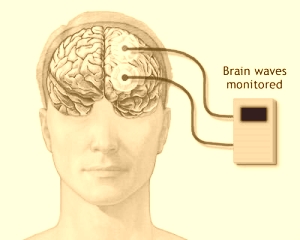 Neuroscientists at the Mayo Clinic campus in Jacksonville, Fla., have demonstrated how brain waves can be used to type alphanumerical characters on a computer screen. By merely focusing on the “q” in a matrix of letters, for example, that “q” appears on the monitor.
Neuroscientists at the Mayo Clinic campus in Jacksonville, Fla., have demonstrated how brain waves can be used to type alphanumerical characters on a computer screen. By merely focusing on the “q” in a matrix of letters, for example, that “q” appears on the monitor.
Researchers say these findings, presented at the 2009 annual meeting of the American Epilepsy Society, represent concrete progress toward a mind-machine interface that may, one day, help people with a variety of disorders control devices, such as prosthetic arms and legs. These disorders include Lou Gehrig’s disease and spinal cord injuries, among many others.
“Over 2 million people in the United States may benefit from assistive devices controlled by a brain-computer interface,” says the study’s lead investigator, neurologist Jerry Shih, M.D. “This study constitutes a baby step on the road toward that future, but it represents tangible progress in using brain waves to do certain tasks.”
Dr. Shih and other Mayo Clinic researchers worked with Dean Krusienski, Ph.D., from the University of North Florida on this study, which was conducted in two patients with epilepsy. These patients were already being monitored for seizure activity using electrocorticography (ECoG), in which electrodes are placed directly on the surface of the brain to record electrical activity produced by the firing of nerve cells. This kind of procedure requires a craniotomy, a surgical incision into the skull.
Dr. Shih wanted to study a mind-machine interface in these patients because he hypothesized that feedback from electrodes placed directly on the brain would be much more specific than data collected from electroencephalography (EEG), in which electrodes are placed on the scalp. Most studies of mind-machine interaction have occurred with EEG, Dr. Shih says.
“There is a big difference in the quality of information you get from ECoG compared to EEG. The scalp and bony skull diffuses and distorts the signal, rather like how the Earth’s atmosphere blurs the light from stars,” he says. “That’s why progress to date on developing these kind of mind interfaces has been slow.”
Because these patients already had ECoG electrodes implanted in their brains to find the area where seizures originated, the researchers could test their fledgling brain-computer interface.
In the study, the two patients sat in front of a monitor that was hooked to a computer running the researchers’ software, which was designed to interpret electrical signals coming from the electrodes.
The patients were asked to look at the screen, which contained a 6-by-6 matrix with a single alphanumeric character inside each square. Every time the square with a certain letter flashed, and the patient focused on it, the computer recorded the brain’s response to the flashing letter. The patients were then asked to focus on specific letters, and the computer software recorded the information. The computer then calibrated the system with the individual patient’s specific brain wave, and when the patient then focused on a letter, the letter appeared on the screen.
“We were able to consistently predict the desired letters for our patients at or near 100 percent accuracy,” Dr. Shih says. “While this is comparable to other researchers’ results with EEGs, this approach is more localized and can potentially provide a faster communication rate. Our goal is to find a way to effectively and consistently use a patient’s brain waves to perform certain tasks.”
Once the technique is perfected, its use will require patients to have a craniotomy, although it isn’t yet known how many electrodes would have to be implanted. And software would have to calibrate each person’s brain waves to the action that is desired, such as movement of a prosthetic arm, Dr. Shih says. “These patients would have to use a computer to interpret their brain waves, but these devices are getting so small, there is a possibility that they could be implanted at some point,” he says.
“We find our progress so far to be very encouraging,” he says.
The study, which is funded by the National Science Foundation, is ongoing.
Source: Kevin Punsky
Mayo Clinic
